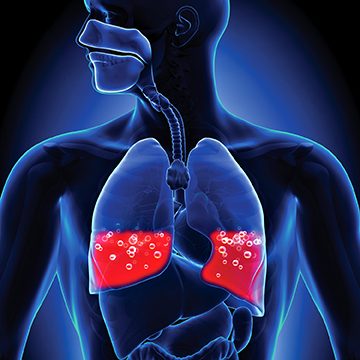DAN® medics and researchers answer your dive medicine questions.
Q: I am a dive instructor but have not dived for five years. I have been diagnosed with bipolar disorder. Can I dive safely with the medicine I take, or will it be dangerous even if I dive in shallow water?
A: Generally speaking, both bipolar I and bipolar II disorders are considered relative contraindications to diving, meaning that people who have this disorder need to be evaluated on a case-by-case basis for their fitness to dive. Many divers have found ways to manage their condition and enjoy diving, but each person should discuss the possible implications of diving with their physicians. DAN medics are available to consult with your health care providers.
Some severe symptoms of bipolar disorder may be a contraindication to diving, and we recommend avoiding diving while in either a manic or depressive state. Manic episodes bring the potential for bad decision-making and engaging in risky behaviors. Depressive episodes can cloud our judgment and produce circumstances that may leave us prone to accident or injury.
There has been little research into the effects of barometric pressure on specific medications. In general, we are most concerned about the underlying conditions that the drugs are treating and the potential side effects of those drugs. Lithium is a common medication used to treat these disorders, but its use comes with significant concerns. Lithium can become toxic if a person is dehydrated or if sodium levels drop. Diving is a diuretic, which can complicate the situation.
The side effects of some drugs can alter a person’s mental capacity or make them drowsy, neither of which is compatible with diving. Some medication side effects — such as fatigue, dizziness, anxiety, blurred vision, and headaches — can mimic symptoms of decompression sickness (DCS) and complicate a DCS diagnosis.
— Ben Strelnick, NREMT, W-EMT

Q: I had difficulty breathing during a dive and was in respiratory distress when I got back on the boat. I was later diagnosed with immersion pulmonary edema (IPE). How can I prevent IPE from happening again?
A: Pulmonary edema is believed to be a manifestation of relative pulmonary capillary hypertension, which means there is increased pressure in the capillaries relative to the pressure in the alveoli. This condition causes fluid to leak from the capillaries into the alveoli, where gas exchange occurs, and inhibits your body from necessary gas exchange, causing you to feel like you’re drowning.
Immersion in water causes a fluid shift from the extremities to the core circulation. Normal physiology can deal with reasonable volume shifts, but factors may arise that prevent the system from handling the additional fluid as needed and can cause pulmonary edema. These factors, for example, can be issues involving the heart chambers, valves, hypertension, pulmonary conditions, overhydration, constrictive gear, negative airway pressures (e.g., from a poorly tuned regulator), or excessive effort. Several of these factors are usually present to cause IPE.
Immersion in water always comes with some risk, but we can help mitigate these risks by hydrating appropriately (but not too much), ensuring gear fits well and is serviced, getting regular checkups, and having fitness-to-dive examinations prior to diving when your health status changes.
— Leandra Lynn, NREMT

Q: I’m a volunteer diver at my local aquarium. The last time I was diving I experienced severe pain in my lower right molar. The pain was relieved during the second dive but returned when I surfaced. I called DAN and the medic referred me to my dentist who discovered an old filling in that tooth had fallen out. I had it replaced and I’m back diving again. Could my dive have contributed to my filling falling out?
A: Dental barotrauma (tooth squeeze), clinically referred to as barodontalgia, occurs when compressed gas is trapped in a susceptible tooth that has an air space that does not equalize effectively. Trapped gas behaves according to Boyle’s Law and can result in tooth fracture and/or gum damage.
As a diver descends into the water column, pressure increases while gas volume decreases. With significant pressure and associated reduction in gas volume, the tooth walls can begin to implode and collapse. When a diver ascends, the opposite occurs: A decrease in pressure and an increase in the volume of trapped gas can lead to rupture and explosion of the walls of the tooth.
Symptoms of a tooth squeeze include tooth sensitivity, pain, bleeding around the gums, or a broken or shattered tooth. Tooth squeeze can happen to more than one tooth and often occurs in older fillings or dental work, but tooth decay and dental infections can also be contributing factors. While many divers suspect tooth squeeze when they experience pain in the face or in an upper tooth, that pain is generally associated with a sinus squeeze caused by inflammation in the paranasal sinuses.
Prevention by having healthy teeth and gums is the best way to avoid a tooth squeeze. This is achieved by regular dental checkups, maintaining good oral health through regular brushing and flossing, and avoiding diving (and flying) immediately after dental work.
Follow established guidelines for appropriate waiting periods after specific dental work before returning to diving. Contact DAN to speak to a medic if you have questions about guidelines for a dental procedure.
— Lana P. Sorrell,
MBA, EMT, DMT
© Alert Diver — Q2 2023